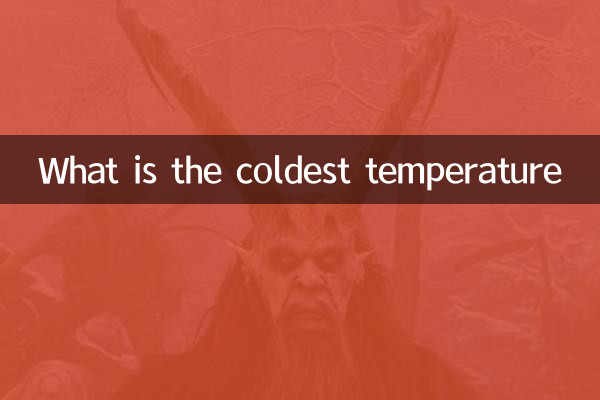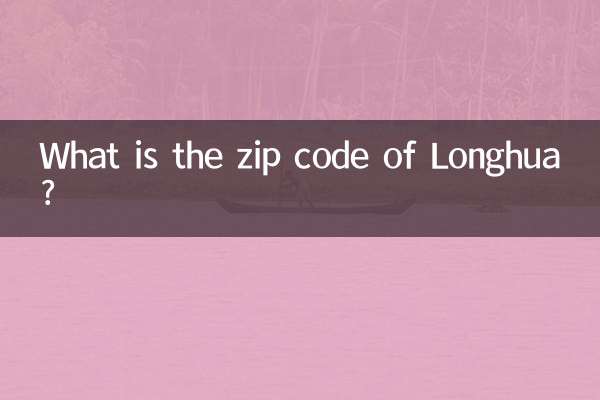What is the coldest temperature
In the process of scientific exploration, humans have been challenging the limits of temperature. From absolute zero to the coldest corners of the universe, the mysteries of low temperatures have always attracted the attention of scientists and the public. This article will combine recent hot topics to discuss the lowest limit of temperature and compile relevant data.
1. Scientific definition of absolute zero

Absolute zero is the lowest theoretically possible temperature, approximately -273.15 degrees Celsius (or 0 Kelvin). At this temperature, molecular motion almost stops. Here are the key facts about absolute zero:
| Temperature name | Celsius temperature | Kelvin temperature | definition |
|---|---|---|---|
| absolute zero | -273.15°C | 0K | The theoretical temperature at which molecular motion stops |
| Laboratory minimum temperature | -273.1499999999°C | 0.0000000001K | Limits reached in human laboratories |
2. Extreme low temperatures in the universe
There are many extremely low-temperature areas in the universe. The following are the known low-temperature records in the universe:
| Object/Area | temperature | Description |
|---|---|---|
| boomerang nebula | -272°C | The coldest natural celestial body known |
| cosmic microwave background radiation | -270.45°C | The afterglow of the Big Bang |
| Pluto surface | -233°C | The coldest planet in the solar system |
3. Recent hotspots in low-temperature scientific research
In the past 10 days, the main hot spots in the scientific community regarding low temperature research include:
| Date | research topic | Key findings |
|---|---|---|
| 2023-11-05 | Quantum Computing Cryogenic Technology | Achieving qubit stability near absolute zero |
| 2023-11-08 | Superconductor research | New material discovered to exhibit superconducting properties at -70°C |
| 2023-11-10 | Space low temperature detection | James Webb Telescope discovers coldest region of universe |
4. Low temperature records created by humans
In laboratory environments, scientists continue to challenge low temperature limits:
| Year | research institute | reach temperature | technical means |
|---|---|---|---|
| 2021 | MIT | 0.0000000001K | Laser cooling technology |
| 2019 | German Institute of Physics and Technology | 0.000000001K | Magneto-optical trap technology |
| 2015 | NASA Cold Atom Laboratory | 0.00000001 K | space environment experiment |
5. The wonderful phenomenon of low temperature
At extremely low temperatures, matter exhibits amazing properties:
| phenomenon | Occurrence temperature | Features |
|---|---|---|
| Superconducting | below critical temperature | resistance is zero |
| superfluid | close to absolute zero | liquid flow without viscosity |
| Bose-Einstein condensation | close to absolute zero | Quantum state macroscopic manifestation |
6. Application prospects of cryogenic technology
Research on extreme low temperatures not only satisfies human curiosity but also leads to practical applications:
| Application areas | temperature range | Purpose |
|---|---|---|
| Medical cryo | -196°C (liquid nitrogen) | Tissue preservation, cryotherapy |
| aerospace engineering | -253°C (liquid hydrogen) | rocket propellant |
| quantum computer | Close to 0K | Maintain quantum state stability |
From the coldest corners of the universe to extreme low temperatures created in laboratories, the lower limits of temperature continue to refresh our understanding of the physical world. With the advancement of science and technology, humans may be able to get closer to the mysterious realm of absolute zero and uncover more mysteries of matter under extreme conditions.
Research on low-temperature science has not only expanded the boundaries of human knowledge, but its applications are also changing many fields such as medical care, energy, and computing. In the future, with the development of quantum technology, the exploration of extremely low temperatures will bring more revolutionary breakthroughs.

check the details

check the details